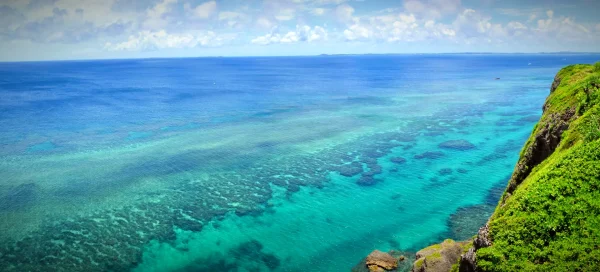Overview
The Bottlenose Dolphin is a highly intelligent marine mammal known for its playful behavior and complex social interactions. It is one of the most widely recognized and studied dolphin species, often seen in coastal waters worldwide. The animal has a streamlined body, a dorsal fin, and a distinctive “bottle-shaped” snout, which gives it its common name.
Primarily found in warm and temperate seas, the Bottlenose Dolphin is highly adaptable and can thrive in various marine environments, including open ocean, coastal areas, and even brackish waters. It is a fast swimmer and an excellent diver, capable of reaching depths of up to 1,300 feet to hunt for fish and squid.
Conservation efforts for the Bottlenose Dolphin are ongoing, as it faces threats from pollution, fishing nets, and habitat degradation. While it is not currently listed as endangered, it is protected under various international laws and agreements to ensure its survival.
Taxonomy
Kingdom
Phylum
Class
Order
Family
Genus
Species
Type
Physical Description:
The Bottlenose Dolphin has a streamlined body that is well-adapted for fast swimming. Its skin is smooth and rubbery, with a coloration that ranges from light gray to dark gray on the back and lighter shades on the belly. The animal has a distinct dorsal fin, which aids in swimming stability, and its pectoral fins are used for steering.
Both male and female Bottlenose Dolphins are similar in appearance, although males are generally larger. The animal has a set of sharp, conical teeth that capture and hold onto prey. Its eyes are on the sides of its head, providing a wide field of vision and a well-developed sense of hearing.

Lifespan: Wild: ~40 years || Captivity; ~55 years

Weight: Male: 1,100 lbs (500 kg) || Female: 660 lbs (300 kg)

Length: Male: 13 ft (4 m) || Female: 8 ft (2.5 m)

Top Speed: 22 mph (35 km/h)
Characteristic:
Native Habitat:
Bottlenose Dolphins are found in warm and temperate seas worldwide. They are highly adaptable and can live in various marine environments, from open ocean to coastal areas and even brackish waters. They prefer regions with relatively shallow depths, although they can dive up to 1,300 feet.
They are commonly found in bays, estuaries, and coastal areas where food is abundant. While they are not migratory, they may travel considerable distances for food or to avoid adverse environmental conditions, such as extreme temperatures or pollution.
Biomes:
WWF Biomes:
Biogeographical Realms:
Continents:
Countries:
Diet:
Diet & Feeding Habits:
Bottlenose Dolphins are carnivorous, primarily feeding on a diet of fish and squid. They often hunt in groups, using complex strategies to herd and capture prey. The dolphins use echolocation to locate food, emitting a series of clicks and listening for the echoes to determine the distance and direction of their target.
They are opportunistic feeders and will consume a variety of marine species depending on availability. In some regions, they have been observed working together with local fishermen, driving fish into nets and sharing the catch. This cooperative behavior is a testament to their intelligence and social complexity.
Mating Behavior:
Mating Description:
Bottlenose Dolphins have a complex social structure and mating system. Males often form alliances to compete for female access, and mating occurs yearly. The gestation period lasts about 12 months, and females give birth to a single calf, which they nurse for up to 18 months.
The mother is the primary caregiver, although other females in the group, known as “aunts,” may assist in caring for the young. Calves are born well-developed and can swim shortly after birth. They remain with their mothers for several years, learning essential skills and social behaviors.
Reproduction Season:
Birth Type:
Pregnancy Duration:
Female Name:
Male Name:
Baby Name:
Social Structure Description:
Bottlenose Dolphins are highly social animals that live in groups called pods. These pods can range in size from a few individuals to several hundred. They have complex social hierarchies and often form alliances, particularly for hunting and mating. Communication is a key aspect of their social structure, and they use a variety of vocalizations, body language, and even touch to interact.
Within a pod, there are often smaller sub-groups based on age, sex, or family relationships. These sub-groups may change frequently, reflecting the dynamic nature of their social interactions. They are known for their playful behavior, often engaging in activities like leaping, surfing on waves, and playing with objects or other marine animals.
Groups:
Conservation Status:
Population Trend:
The Bottlenose Dolphin is not currently endangered but faces various threats, including pollution, fishing nets, and habitat degradation. Conservation efforts are focused on reducing these threats and protecting critical habitats. Various laws and international agreements are in place to protect the species, although challenges remain in enforcing these measures.
Public awareness campaigns and educational programs are also being conducted to promote responsible interaction with these animals, particularly in areas where they are a popular tourist attraction. Ongoing research aims to better understand their complex social structures, behaviors, and needs, which will aid in future conservation efforts.
Population Threats:
The primary threats to the Bottlenose Dolphin are pollution, fishing nets, and habitat degradation. Chemical pollutants can accumulate in their tissues, leading to health issues. They also risk becoming entangled in fishing nets, which can result in injury or death.
Noise pollution from boat traffic and industrial activities can interfere with their echolocation and communication. Climate change poses an additional threat, as it could lead to changes in sea temperature and the distribution of prey species, affecting their ability to find food.
Conservation Efforts:
Conservation efforts for the Bottlenose Dolphin include legal protections, habitat conservation, and public awareness campaigns. Various international agreements aim to protect the species from hunting and capture. Efforts are also being made to reduce pollution and the risk of entanglement in fishing nets.
Educational programs aim to inform the public about the importance of conserving this species and promoting responsible interaction, particularly in areas where they are popular tourist attractions. Ongoing research is focused on understanding their complex social structures, behaviors, and needs, which will aid in future conservation efforts.
Additional Resources:
Fun Facts
- Bottlenose Dolphins are one of the most intelligent marine animals.
- They use echolocation to locate prey and navigate.
- They are known for their playful behavior and complex social interactions.
- Bottlenose Dolphins can swim at speeds of up to 22 mph.
- They have been observed using tools like marine sponges to protect their snouts while foraging.
- They are capable of diving up to 1,300 feet.
- They have a wide distribution and are found in oceans and seas worldwide, except for the polar regions.
- They are not currently considered endangered but face pollution, fishing nets, and habitat degradation threats.
- They have a complex social structure and often form alliances for hunting and mating.
- They communicate using a variety of vocalizations, body language, and even touch.






